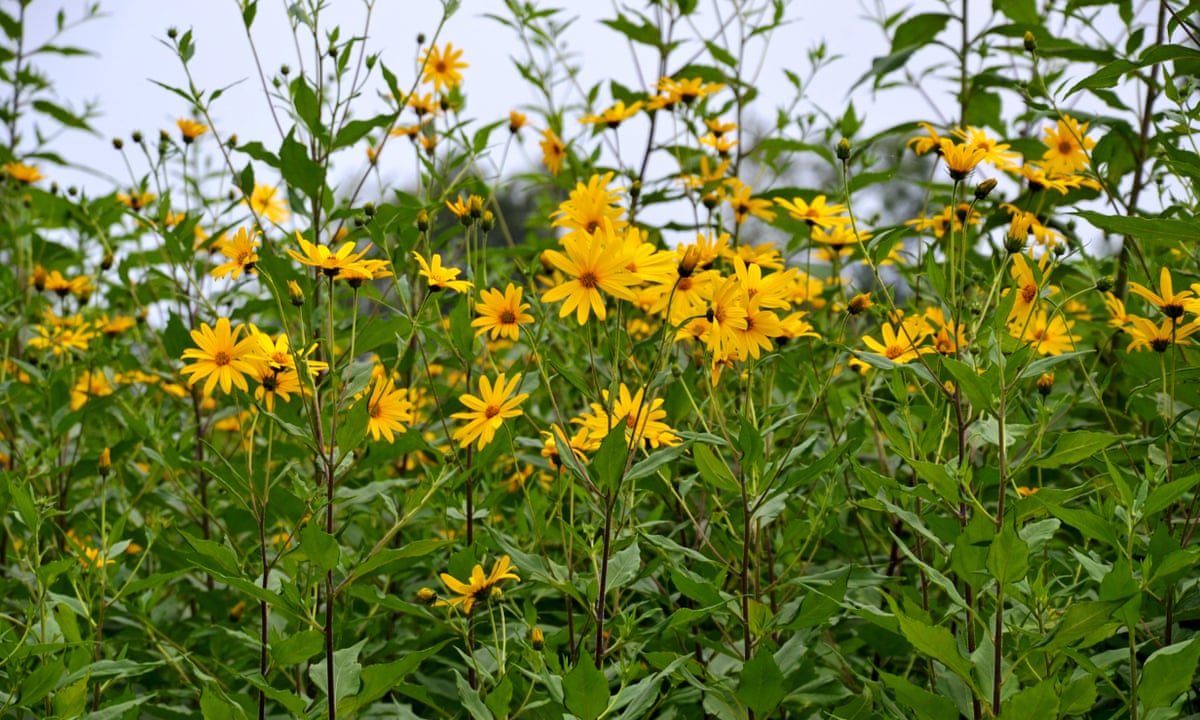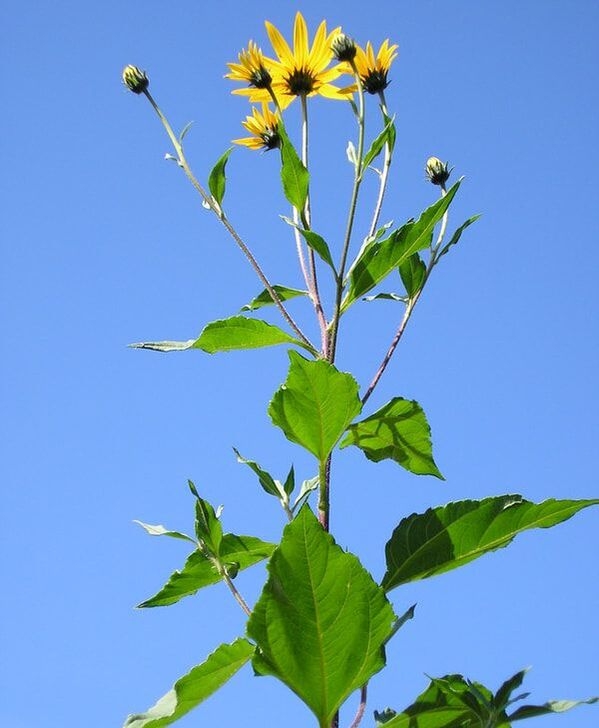Jerusalem Artichoke
Helianthus tuberosus
There are a couple of common misconceptions you should quickly forget when first adding this sunny and brilliant plant to your yard.
A quick rundown: it’s not from Jerusalem, and it’s most definitely not an artichoke!
On the other hand, there are two things that you absolutely should remember: it’s not only a beautiful flower, but its roots (called “tubers”) make for a delicious food crop, too.
Together, food and gardening pleasures have made this botanical a floral delight and culinary favorite for many thousands of years – among Native American peoples and Europeans alike – with a deep history behind its rise to global recognition.
A very hairy, tall, much-branching perennial, often occurring in dense colonies. Flowerheads sunflowers, with 12–20 ray florets, to 3 inches across, frequently with a distinct chocolate scent. Blooms August–October. Leaves with winged petioles, lance-shaped, coarsely toothed, to 9 inches long, prominently 3-veined, rough and hairy above, downy below. Roots potato-like, edible tubers.
A quick rundown: it’s not from Jerusalem, and it’s most definitely not an artichoke!
On the other hand, there are two things that you absolutely should remember: it’s not only a beautiful flower, but its roots (called “tubers”) make for a delicious food crop, too.
Together, food and gardening pleasures have made this botanical a floral delight and culinary favorite for many thousands of years – among Native American peoples and Europeans alike – with a deep history behind its rise to global recognition.
A very hairy, tall, much-branching perennial, often occurring in dense colonies. Flowerheads sunflowers, with 12–20 ray florets, to 3 inches across, frequently with a distinct chocolate scent. Blooms August–October. Leaves with winged petioles, lance-shaped, coarsely toothed, to 9 inches long, prominently 3-veined, rough and hairy above, downy below. Roots potato-like, edible tubers.

